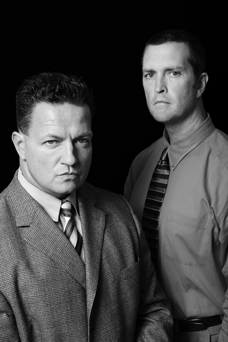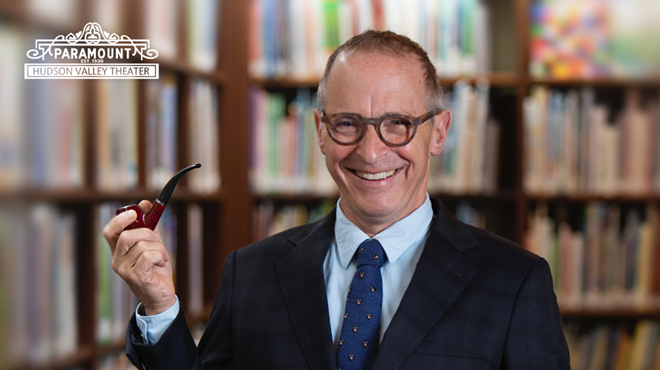Most recently, it was Virginia Tech on April 16 and the all-too-familiar images: the wounded, the rescuers, the traumatized survivors, the dead, the grieving, and, finally, the troubling presence of the shooter addressing us on our television screens. We barely recover from one school shooting before another invades our attention. The horrific attacks at Columbine in 1999 were not the first killings in our public schools, but they ushered in a shocking wave of violence that seems only to intensify. In the past four years alone, we have witnessed scores of violent episodes at American high schools and colleges; during that time, attacks in Red Lake, Minnesota; Nickel Mines, Pennsylvania; Bailey, Colorado; and, of course, on the Virginia Tech campus in Blacksburg, Virginia, have claimed 51 lives.
For John Sawchuk and Michael Bennett, the unabated school violence leaves them nowhere to hide. Sawchuk is now principal of Columbia High School in East Greenbush, New York, and Michael Bennett is the assistant principal of the same sprawling complex. The two men have worked together in the mixed rural and suburban East Greenbush Central School District for many years, but their fates became inexorably linked on February 9, 2004, when 16-year-old Jon Romano brought a shotgun into Columbia High and opened fire in a classroom corridor. No one, thankfully, was killed in the incident, but both Sawchuk and Bennett were involved in the shooting. It was Sawchuk who eventually subdued Romano, but only after the teenager had turned his weapon on Bennett and wounded him. The events of that day continue to haunt both men.
“When I heard about Virginia Tech,” Sawchuk said, “my heart kind of dropped. You immediately start thinking about what happened here in East Greenbush. It puts you in touch with what folks are going through down there.”
Bennett agreed. “Whenever you hear these stories,” he said, “your heart just automatically goes out to the survivors for what they’re about to go through.”
Sawchuk, Bennett, and I met at the high school three weeks after the Virginia Tech killings. I was curious about their response to the massacre, and we talked about how every new attack brings back memories of their own brush with violence at the hands of Romano. For the past two years, I have been writing a book about the Romano incident. I have read all 86 witness statements generated by the different agencies that investigated the crime, and interviewed almost everyone directly involved in the case, including Romano’s mother, his defense attorney, the Rensselaer County district attorney, the East Greenbush police chief, and many of the administrators, teachers, and students who were at Columbia when the shooting occurred. I have corresponded with Romano, who is serving a 20-year sentence at the maximum-security Clinton Correctional Facility in Dannemora, New York, in an inmate population that includes axe murderer Christopher Porco and cop killer Ralph “Bucky” Phillips. I have been given access to some of Romano’s letters, and to the suicide note he left in his bedroom before he drove to school the morning of the attack.
On that gray February day, Romano smuggled a loaded 12-gauge shotgun into Columbia High. There, he hid for 20 minutes in a bathroom stall on the second floor of the building’s South Tower, and sent a text message to several friends: I’M IN SCHOOL WITH SHOTGUN. GET OUT. When a student came into the restroom, Romano stepped out and pointed the shotgun at him. “Don’t do this, man,” the student begged, backing out and running into an empty classroom next door.
Romano emerged from the bathroom. Two students were in the otherwise empty hallway; one, Jeff Kinary, made eye contact with Romano, who raised the gun to waist level and pulled the trigger. Kinary saw a flash of fire erupt from the barrel and threw himself forward. The shot slammed into the wall behind him. Kinary’s ears were ringing and he could hear Romano racking another round into the chamber. He frantically crawled past the social studies office and fled toward the stairwell. The other student was just ahead of him, and another shot exploded into the wall beside him. “A kid has a gun,” the boy screamed as he leapt down some nearby stairs, with Kinary shouting, “He shot at us!” They ran, afraid to look back, but Romano wasn’t following them. He was moving toward a classroom.
Sawchuk, Columbia’s assistant principal at the time, was observing a math class that morning in a classroom on the same floor, around a corner from the attack. When he heard the first gunshot, he was afraid something might have blown up in the metal shop downstairs. Bennett, then a special education teacher, was meeting with students two doors down from Sawchuck. He wondered if some metal beams had fallen off a construction truck. They stepped out of their classrooms at the same instant and heard the second shot, unmistakable this time, much closer. “Keep this door locked!” Sawchuk yelled to the math teacher, and ran toward the sound.
When Sawchuk rounded the corner at the end of the hall, he saw a tall, dark figure leaning into an English classroom, pointing a gun inside. The figure looked around as the principal approached him, and Sawchuk realized he knew him. Romano had been in his office for disciplinary problems, and Sawchuk knew he had some serious emotional issues. “Give me the gun,” Sawchuk commanded. He reached around Romano to grab the barrel before the teen could fully turn on him.
Romano didn’t say a word, but Sawchuk could see that his finger was on the trigger. Sawchuk is six feet tall and built like a weightlifter, but Romano was taller and surprisingly strong. Sawchuk was behind him, and knew he didn’t have much leverage on the shotgun. Romano stopped struggling for a moment, and Sawchuk tried to push the gun away. The barrel was pointed at the ground, and he thought, If this thing goes off now, it’s going to blind me or something.
“Mike, help!” Sawchuk yelled, and he saw Bennett running down the hall. Romano lifted his head and saw Bennett too, and tried to jack up the shotgun to fire. Sawchuk knew that if he let Romano pull the gun up, Bennett was probably dead. He strained to hold it down, but the gun suddenly went off.
The recoil and force of the struggle pushed Sawchuk and Romano a few yards back, but both kept their grip on the weapon. Sawchuk saw Bennett dive into a classroom and figured the shot must have missed him. But now Romano had less to lose. Don’t let go! Don’t let go! Sawchuk kept telling himself, but he knew he only had a tenuous hold on the gun, and less on the rangy kid trying to haul it out of his hands. Romano was yanking him back and forth, slamming him into the wall next to the social studies office, with the barrel of the shotgun inching toward him. Sawchuk was thinking Bennett would come out any time now to help, and he yelled again: “Come on, help. Somebody, help me. Mike. Mike, help!”
“I can’t. I’m hit,” Bennett answered, and Sawchuk thought, This is not going to end well. He began talking to Romano, “Come on, Jon, give it up. It’s over with,” and the kid suddenly surprised him and said, “Okay.” As Romano stopped struggling, Sawchuk grabbed the shotgun away, and tripped Romano’s legs out from under him so he fell to the floor. Then Sawchuk dragged him over to the social studies office and convinced the teachers inside it was safe enough to open the door.
The actual crisis took 10 minutes or less, but it set a firestorm of activity and drama into motion: An East Greenbush police team stormed the building; New York State Police blocked the roads; EMTs and paramedics arrived; SWAT teams conducted a thorough search of the building; and terrified parents tried to reach the school, where frightened staff and students, sequestered during a three-hour lockdown, were trying to understand what was happening around them.
The emotional devastation an incident like this leaves in its wake is enormous, and the toughest moments for survivors like Sawchuk and Bennett are typically after the shootings. As Terry Brewer, superintendent of the East Greenbush Central School District, once put it, “Ten minutes of crisis results in 10 months to a year of recovery.” For Sawchuk and Bennett, the healing period has stretched out to more than three years, and they’re still counting.
“It wasn’t so much that day of the incident, because what happened didn’t really sink in, with all of the adrenaline that was flowing,” Sawchuk remembered, “but it was the day after, and the days that followed. Well, this thing happened, but Jon Romano didn’t really want to hurt anybody—that’s what I had been thinking. All the local papers did a big story the next day, though, with a headline that said something about a gun and dreams of dying, like with that kid in Virginia. The police had found a suicide note that Romano left, naming people he wanted to kill at our school. He had planned this, and he was coming in to do damage to people—to kill people.”
Bennett had bird shot deep in his leg, but he didn’t want to have surgery to remove it. He opted to live with it and, though he limped for several weeks, his physical wounds healed pretty quickly. His psychological state was a different story. In an interview with me a year after the incident, Bennett recalled his return to teaching on February 16, a week after the shooting. He made it through three days before he fell apart. “It was before the start of a class, and I was just walking down a hallway, and at that point I felt myself really getting ready to lose it—just the anxiety of everything—and I was able to get outside the building and get to my car. Then I lost it. I had a breakdown.”
Superintendent Brewer convinced Bennett to see a counselor, and that seemed to help.
He thought he was strong enough to start teaching again on June 2, but a nightmare about dying of cancer and then a bout of dry heaves the morning of his return didn’t sit well. “As I approached Columbia High that morning,” Mike recalled, “I began to feel worse and worse. I went to the nurse and said, ‘Sheila, I know I’m not having a heart attack, but I’m having a hard time catching my breath here. I’m just not feeling right.’” The nurse took his blood pressure and told him they needed to call his doctor. It turned out to be an acute anxiety attack. Bennett began to see a psychiatrist, who prescribed anti-anxiety medication for him. He didn’t return to teaching until September of that year, and transferred to Goff Middle School to avoid the difficult atmosphere and memories at the high school. He returned to Columbia this year when he was appointed vice-principal.
Three years after the incident, Sawchuk and Bennett have clearly moved forward with their careers. They looked healthy and acted welcoming, but were visibly tense when our Virginia Tech discussion reminded them of their past ordeal. “One of the things that I know is that you live it, and at Virginia Tech they will all continue to live it, to some degree, every day of their lives,” Bennett cautioned. He lifted his plastic identification badge, which also holds a picture of his two daughters. “Everything is about silver linings now. It’s all about my girls, and about my wife. Every day’s a gift.”
“We always talk about how lucky we were,” Sawchuk added, then went on to describe the 20 or so credible threats of violence that are revealed during the year on the anonymous telephone tip-line installed at Columbia High. “There’s always someone who knows,” Sawchuk concluded. “I thought about this with Virginia Tech—there are people who knew. And those are the people who need to come forward. They have to say, ‘Here’s what’s happening with this kid. This kid’s isolated. This isn’t normal.’” Of course, that is the only truly effective direction school administrators can go, identifying students who are at risk of becoming violent and helping them. But in John Sawchuk’s eyes I saw the scary recognition that these violent events, and the media’s formulaic treatment of them, might actually be changing our expectations of what is normal these days.

















